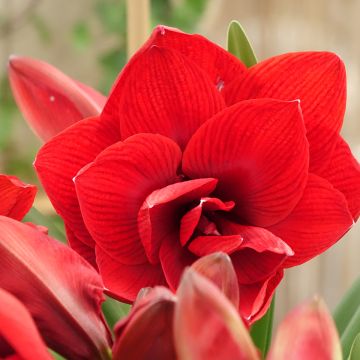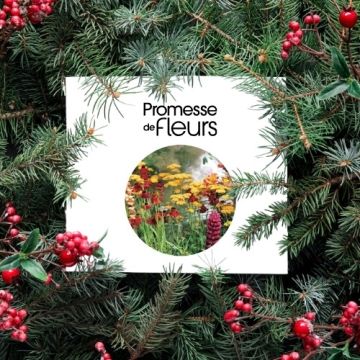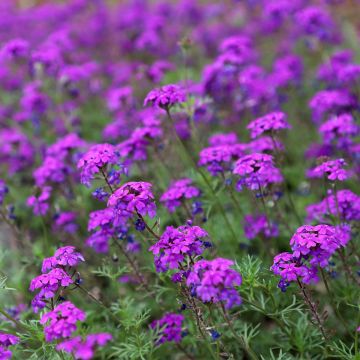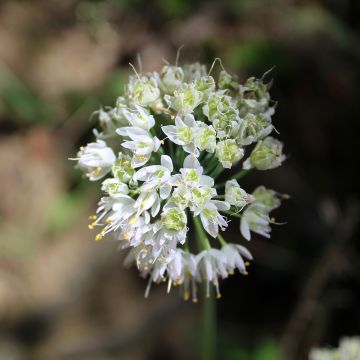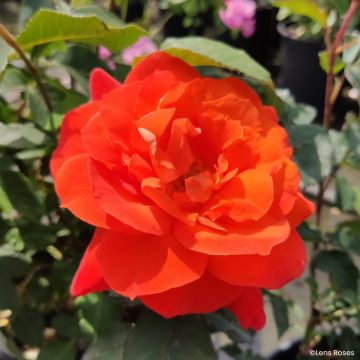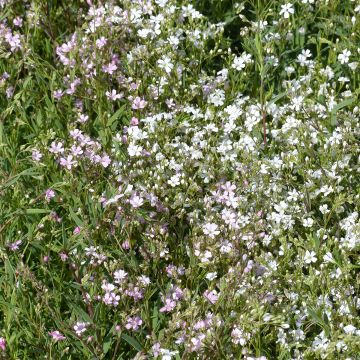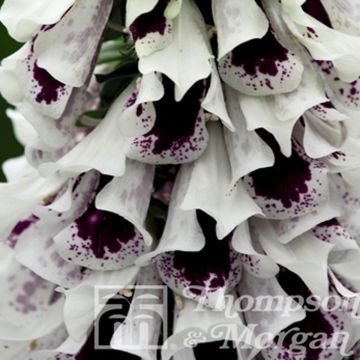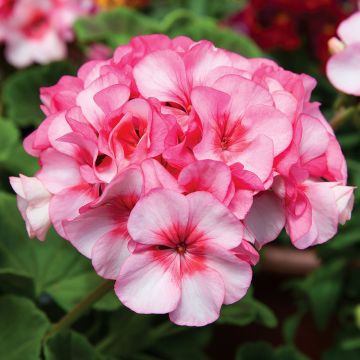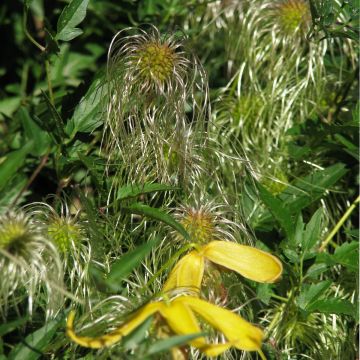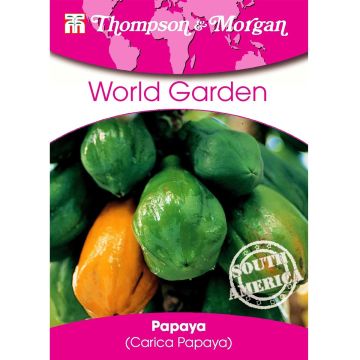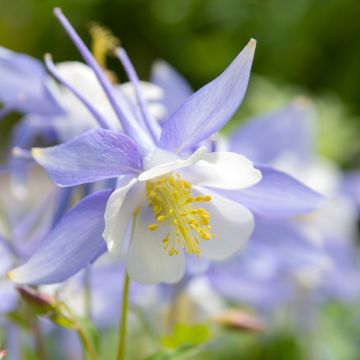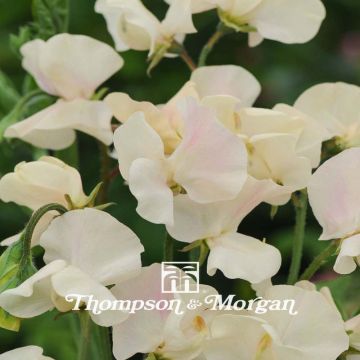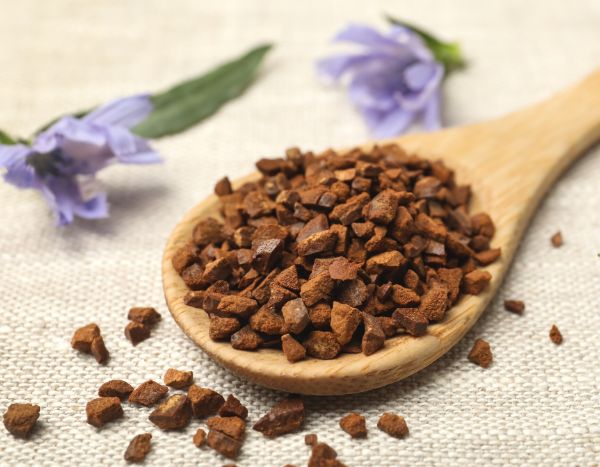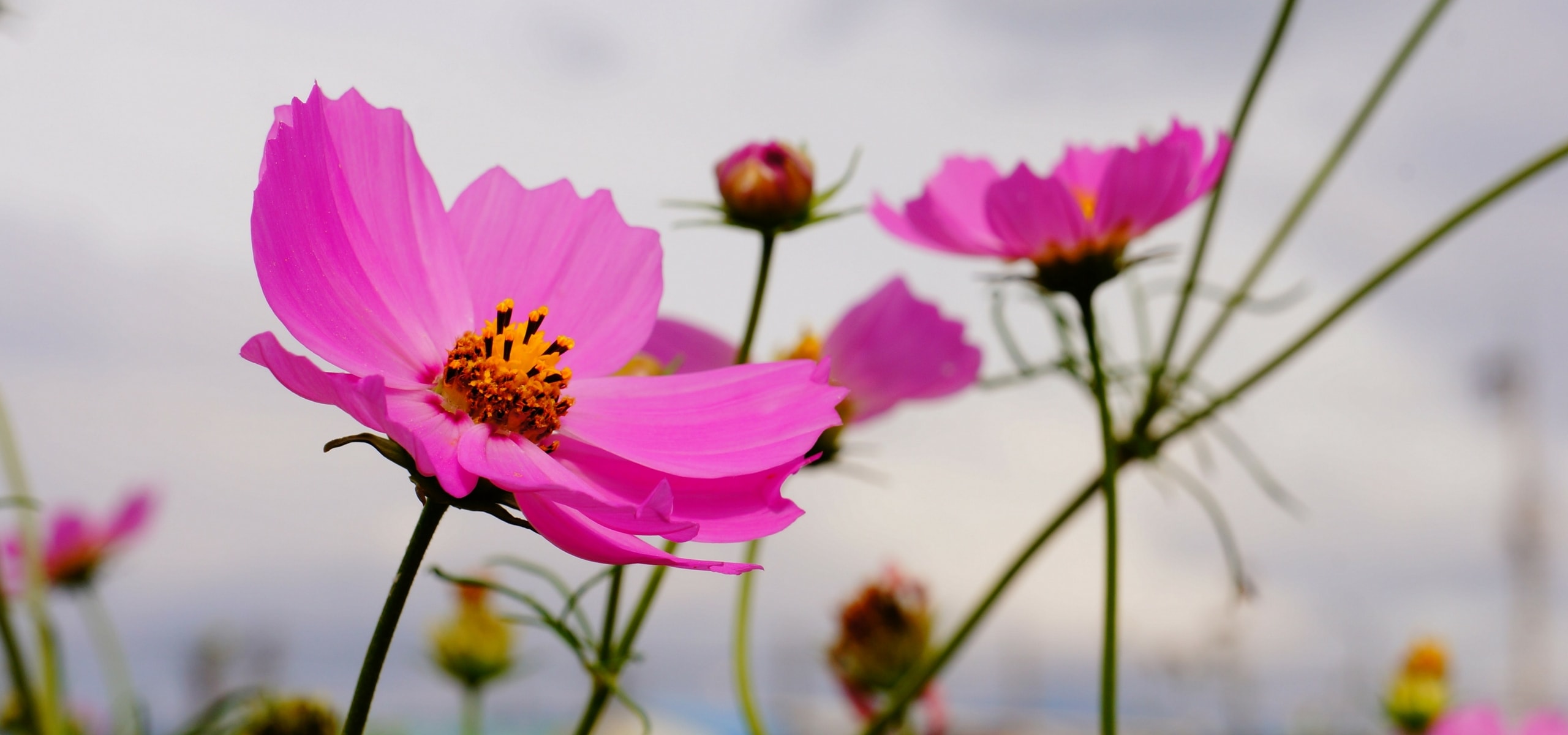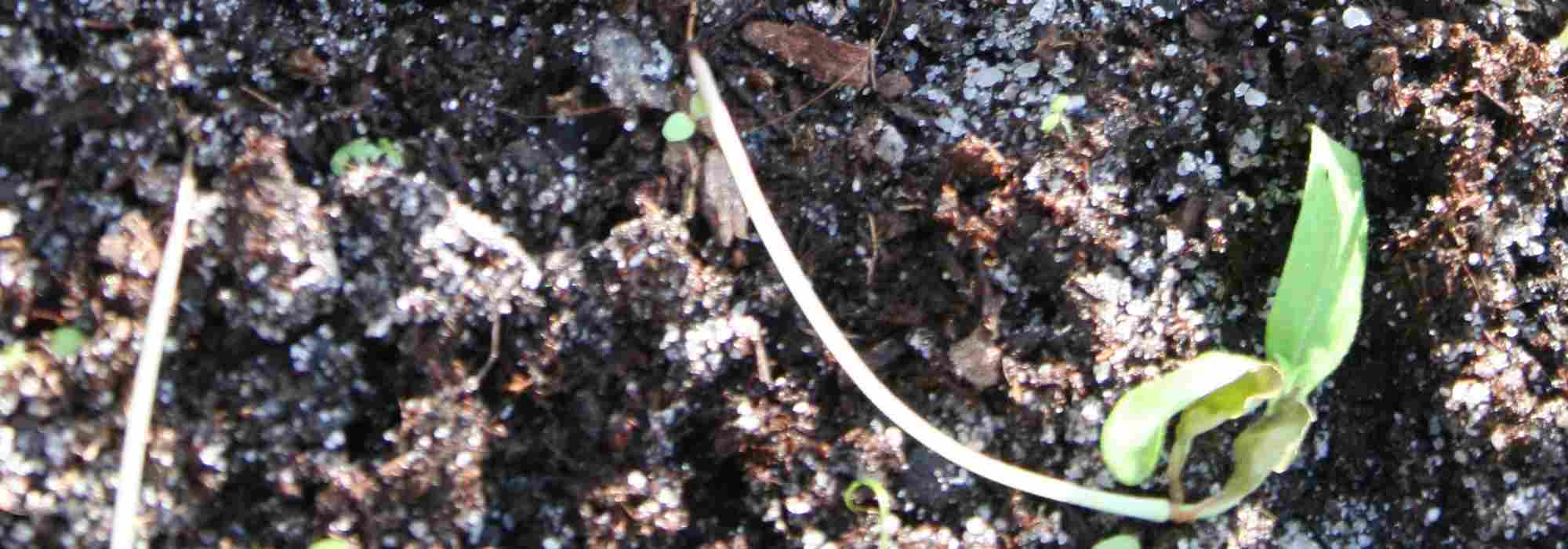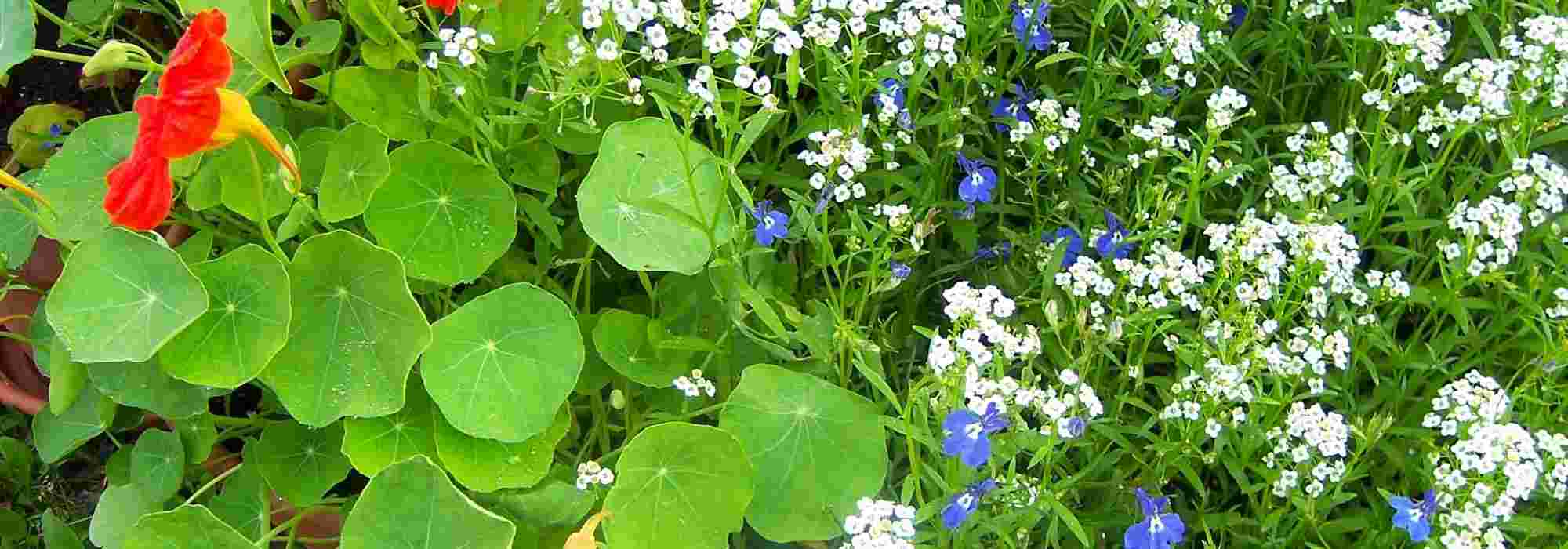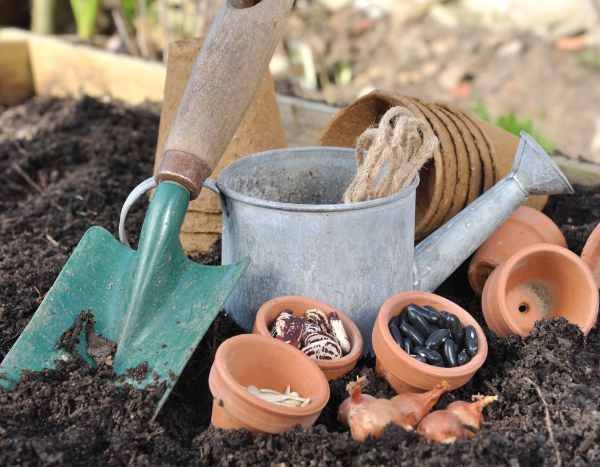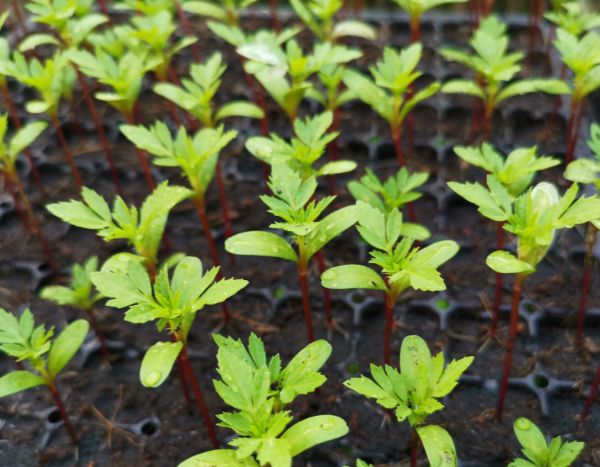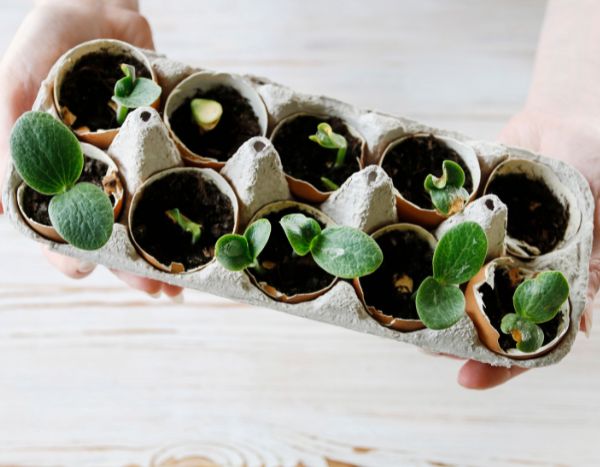

Alstroemeria Ligtu Hybrids - Peruvian Lily
Alstroemeria Ligtu Hybrids - Peruvian Lily
Alstroemeria ligtu x haemantha Ligtu Hybrids
Peruvian Lily, Lily of the Incas
Fridge scarification: no germination. Placing the seeds on damp cotton wool in the fridge: 4/6 have sprouted.
Marie-Rose P., 06/06/2018
Special offer!
Receive a €20 voucher for any order over €90 (excluding delivery costs, credit notes, and plastic-free options)!
1- Add your favorite plants to your cart.
2- Once you have reached €90, confirm your order (you can even choose the delivery date!).
3- As soon as your order is shipped, you will receive an email containing your voucher code, valid for 3 months (90 days).
Your voucher is unique and can only be used once, for any order with a minimum value of €20, excluding delivery costs.
Can be combined with other current offers, non-divisible and non-refundable.
Why not try an alternative variety in stock?
View all →This plant carries a 6 months recovery warranty
More information
We guarantee the quality of our plants for a full growing cycle, and will replace at our expense any plant that fails to recover under normal climatic and planting conditions.
Does this plant fit my garden?
Set up your Plantfit profile →
Description
Alstroemeria 'Ligtu Hybrids' is a stunning collection of very exotic lily-like flowers in a variety of warm pink, orange and red shades with distinctive, contrasting streaks. These hardy perennial hybrids return faithfully year after year, producing stunning cut flowers. Although they can sometimes prove a little temperamental to grow, in the right conditions they will clump up and self-seed easily. Ideal for borders and rock gardens with cool, light, loose, sandy soil and a sunny position.
Alstroemeria 'Ligtu Hybrids' are perennial plants that belong to the Alstroemeriaceae family. They result from the cross between Alstroemeria haemantha and Alstroemeria ligtu, two species native to Chili and Peru hence the name Peruvian Lily. They occur naturally on the draining, rocky slopes of the Andean mountains in fairly acidic soil. The plants quickly form large clumps of sturdy, upright stems topped with thin, slightly pubescent, greyish-green leaves. In the spring and summer of their second year, the 65-cm-high stems produce terminal umbels of funnel-shaped flowers, comprised of 6 non-symmetrical, irregularly spotted or streaked petals. Their colours vary greatly, from bright red with yellow streaks, to salmon pink, yellow or cream. Alstroemeria are tuberous plants with thick, fleshy roots that are fragile and snap easily. They need light, loose soil to develop properly and must be handled with great care when transplanting. Alstromeria self-seeds easily.
Alstroemeria 'Ligtu Hybrids' are very popular cut flowers that are suitable for growing in beds, rock gardens, pots and window boxes. They are fairly temperamental plants: if their environment does not suit them, they can die overnight; if the conditions are right, they can soon become invasive. In the vegetable garden or on a well-drained, sunny bank they can be left to form large clumps that will continue to expand year after year.
Report an error about the product description
Flowering
Foliage
Plant habit
Botanical data
Alstroemeria
ligtu x haemantha
Ligtu Hybrids
Alstroemeriaceae
Peruvian Lily, Lily of the Incas
South America
Other Thompson and Morgan seeds
View all →Planting and care
Alstroemeria plants can be divided in the spring. However, their tuberous roots are particularly fragile and must be handled with care. Growing Alstroemerias from seed takes longer and can be fairly tricky; however, it generally gives better results in the long run.
HOW TO SOW:
Sow from February to July in seed trays or pots. Use good quality sowing mix and sow at a depth of about 6 mm. Place the seed trays inside a polyethylene bag or propagator for 3-6 weeks at a temperature of 20-25°C. Then, keep them at a temperature of about 5°C for a few weeks (in the fridge for example), before bringing them back out to 20°C. Germination takes 14 to 30 days.
When the plants are strong enough to handle, transplant them into 8 cm pots – careful not to damage to roots. Harden them off before planting them out in a sunny location, about 30 cm apart. Plants grown from seed take about 2 years to produce flowers.
HOW TO GROW:
Alstroemerias like light, sandy or loamy, well drained and loose soil. Amend heavy, compact soil with gravel, coarse sand and garden compost. Avoid growing Alstroemerias in excessively chalky soil or limestone. Although they are rather choosy when it comes to growing conditions, Peruvian lilies are bomb-proof once they find the right spot! They are fairly drought-resistant but flowers and leaves can burn up when exposed to hot afternoon or evening sun. Best results are obtained in an east-facing location, with sun in the morning and light shade in the afternoon.
Sowing period
Intended location
Planting & care advice
-
, onOrder confirmed
Reply from on Promesse de fleurs
Haven't found what you were looking for?
Hardiness is the lowest winter temperature a plant can endure without suffering serious damage or even dying. However, hardiness is affected by location (a sheltered area, such as a patio), protection (winter cover) and soil type (hardiness is improved by well-drained soil).

Photo Sharing Terms & Conditions
In order to encourage gardeners to interact and share their experiences, Promesse de fleurs offers various media enabling content to be uploaded onto its Site - in particular via the ‘Photo sharing’ module.
The User agrees to refrain from:
- Posting any content that is illegal, prejudicial, insulting, racist, inciteful to hatred, revisionist, contrary to public decency, that infringes on privacy or on the privacy rights of third parties, in particular the publicity rights of persons and goods, intellectual property rights, or the right to privacy.
- Submitting content on behalf of a third party;
- Impersonate the identity of a third party and/or publish any personal information about a third party;
In general, the User undertakes to refrain from any unethical behaviour.
All Content (in particular text, comments, files, images, photos, videos, creative works, etc.), which may be subject to property or intellectual property rights, image or other private rights, shall remain the property of the User, subject to the limited rights granted by the terms of the licence granted by Promesse de fleurs as stated below. Users are at liberty to publish or not to publish such Content on the Site, notably via the ‘Photo Sharing’ facility, and accept that this Content shall be made public and freely accessible, notably on the Internet.
Users further acknowledge, undertake to have ,and guarantee that they hold all necessary rights and permissions to publish such material on the Site, in particular with regard to the legislation in force pertaining to any privacy, property, intellectual property, image, or contractual rights, or rights of any other nature. By publishing such Content on the Site, Users acknowledge accepting full liability as publishers of the Content within the meaning of the law, and grant Promesse de fleurs, free of charge, an inclusive, worldwide licence for the said Content for the entire duration of its publication, including all reproduction, representation, up/downloading, displaying, performing, transmission, and storage rights.
Users also grant permission for their name to be linked to the Content and accept that this link may not always be made available.
By engaging in posting material, Users consent to their Content becoming automatically accessible on the Internet, in particular on other sites and/or blogs and/or web pages of the Promesse de fleurs site, including in particular social pages and the Promesse de fleurs catalogue.
Users may secure the removal of entrusted content free of charge by issuing a simple request via our contact form.
The flowering period indicated on our website applies to countries and regions located in USDA zone 8 (France, the United Kingdom, Ireland, the Netherlands, etc.)
It will vary according to where you live:
- In zones 9 to 10 (Italy, Spain, Greece, etc.), flowering will occur about 2 to 4 weeks earlier.
- In zones 6 to 7 (Germany, Poland, Slovenia, and lower mountainous regions), flowering will be delayed by 2 to 3 weeks.
- In zone 5 (Central Europe, Scandinavia), blooming will be delayed by 3 to 5 weeks.
In temperate climates, pruning of spring-flowering shrubs (forsythia, spireas, etc.) should be done just after flowering.
Pruning of summer-flowering shrubs (Indian Lilac, Perovskia, etc.) can be done in winter or spring.
In cold regions as well as with frost-sensitive plants, avoid pruning too early when severe frosts may still occur.
The planting period indicated on our website applies to countries and regions located in USDA zone 8 (France, United Kingdom, Ireland, Netherlands).
It will vary according to where you live:
- In Mediterranean zones (Marseille, Madrid, Milan, etc.), autumn and winter are the best planting periods.
- In continental zones (Strasbourg, Munich, Vienna, etc.), delay planting by 2 to 3 weeks in spring and bring it forward by 2 to 4 weeks in autumn.
- In mountainous regions (the Alps, Pyrenees, Carpathians, etc.), it is best to plant in late spring (May-June) or late summer (August-September).
The harvesting period indicated on our website applies to countries and regions in USDA zone 8 (France, England, Ireland, the Netherlands).
In colder areas (Scandinavia, Poland, Austria...) fruit and vegetable harvests are likely to be delayed by 3-4 weeks.
In warmer areas (Italy, Spain, Greece, etc.), harvesting will probably take place earlier, depending on weather conditions.
The sowing periods indicated on our website apply to countries and regions within USDA Zone 8 (France, UK, Ireland, Netherlands).
In colder areas (Scandinavia, Poland, Austria...), delay any outdoor sowing by 3-4 weeks, or sow under glass.
In warmer climes (Italy, Spain, Greece, etc.), bring outdoor sowing forward by a few weeks.































